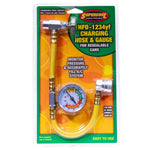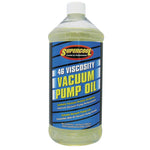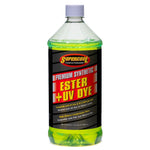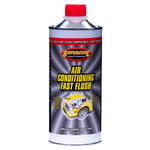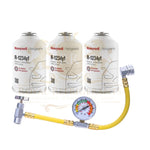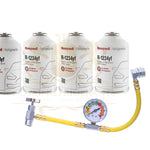You have no items in your shopping cart.

When it comes to air conditioning systems, the type of refrigerant used plays a crucial role in performance, safety, and environmental compliance. Many homeowners and HVAC professionals may wonder, Can you use an R22 refrigerant on an R410A unit? The short answer is no, and there are critical reasons behind this incompatibility.
In this article, we will explore why R22 refrigerant should not be used in R410A units, the potential risks of mixing these refrigerants, and the proper alternatives for maintaining HVAC systems efficiently and safely. As a trusted provider of high-quality refrigerants, Royal Refrigerants is here to guide you through the best practices and solutions for your cooling needs.
Understanding the Differences Between R22 and R410A Refrigerants
R22 refrigerant and R410A refrigerant are fundamentally different in their chemical composition, operating pressures, and environmental impact.

These differences are why they are not interchangeable in HVAC systems.
Chemical Composition and Compatibility
R22 refrigerant, also known as chlorodifluoromethane, is a hydrochlorofluorocarbon (HCFC), which contributes to ozone depletion. On the other hand, R410A refrigerant is a hydrofluorocarbon (HFC), free of chlorine, making it more environmentally friendly. These chemical differences affect how each refrigerant reacts within a cooling system, meaning they require different lubricants and system components.
Operating Pressure Differences
One of the most significant reasons you cannot use R22 refrigerant in an R410A unit is the operating pressure. R410A systems operate at much higher pressures than R22 systems, typically by 50-60%. An R22 refrigerant cannot withstand these high pressures, leading to potential system failures, compressor damage, and safety hazards.
Environmental Regulations and Phase-Outs
Due to its ozone-depleting potential, R22 refrigerant has been phased out under the Montreal Protocol and is no longer produced or imported in many countries, including the United States. Meanwhile, R410A refrigerant meets current environmental standards, making it a compliant and safe choice for modern HVAC systems.
Risks of Using R22 Refrigerant in an R410A Unit
Attempting to use R22 refrigerant in an R410A system is not only technically impractical but also poses several risks to the HVAC equipment and safety of the system.
System Damage and Failures
The primary risk of using R22 refrigerant in an R410A unit is equipment damage. Since R22 and R410A operate at different pressures, components such as the compressor, valves, and coils are not compatible. This mismatch can cause pressure imbalances, leading to compressor burnout and system breakdowns.
Reduced Efficiency and Performance
If R22 refrigerant is introduced into an R410A system, the cooling performance will be severely impacted. The system may struggle to reach the desired temperature, run inefficiently, and consume excessive energy, leading to higher utility costs and ineffective cooling.
Safety Concerns
Using R22 refrigerant in an R410A unit can create dangerous pressure imbalances. The system could become over-pressurized, leading to refrigerant leaks or even burst components, which are serious safety hazards for homeowners and technicians.
What to Do If Your R410A Unit Needs a Refrigerant Recharge
If your R410A unit requires a refrigerant recharge, it is crucial to use the correct type of refrigerant and follow proper procedures.

Consult a Licensed HVAC Technician
Recharging an HVAC system with R410A refrigerant should always be performed by a licensed HVAC professional. They have the tools, knowledge, and safety equipment needed to handle high-pressure refrigerants safely and efficiently.
Use High-Quality R410A Refrigerant
Choosing a reliable supplier like Royal Refrigerants ensures that you receive pure, high-quality R410A refrigerant. Using high-quality refrigerant can maximize the efficiency and longevity of your AC system, ensuring optimal performance and compliance with environmental regulations.
Alternatives to Using R22 Refrigerant in R410A Units
Since you cannot use R22 refrigerant in an R410A system, there are safe and effective alternatives to consider when maintaining or retrofitting older HVAC units.
R410A Refrigerant for New Systems
For R410A units, always use R410A refrigerant exclusively. This HFC refrigerant is compatible with modern AC systems and provides better cooling efficiency, environmental safety, and compliance with regulations.
Retrofitting Older R22 Systems
If you have an older system that uses R22 refrigerant, you can either upgrade to a newer R410A system or retrofit the existing system with an approved R22 replacement such as R407C or MO99. This process involves changing components, including lubricants and valves, to ensure system compatibility and safety.
Additional Considerations When Handling Refrigerants
When working with refrigerants, safety and compliance are paramount. It is essential to follow regulations and use proper handling techniques.

Safety Precautions When Handling R22 and R410A
Always wear protective gear, including gloves, goggles, and respiratory protection, when dealing with refrigerants. Make sure the work area is well-ventilated to prevent inhalation of gases.
Importance of Refrigerant Quality
Using high-quality refrigerants from reputable providers like Royal Refrigerants ensures your HVAC system remains efficient and safe to operate. Low-quality or contaminated refrigerants can lead to system failures and safety risks.
FAQs
1. Can I mix R22 and R410A refrigerants in my AC unit?
No, R22 refrigerant and R410A refrigerant cannot be mixed. These refrigerants have different chemical properties and operating pressures, making them incompatible.
2. What happens if I use R22 refrigerant in an R410A system?
Using R22 refrigerant in an R410A unit can cause equipment damage, reduced efficiency, and serious safety hazards due to pressure imbalances.
3. How do I know if my AC system uses R22 or R410A refrigerant?
Check the label on the compressor unit or consult your AC manual. You can also ask a licensed HVAC technician to verify the type of refrigerant used.
4. What should I do if my R410A unit needs more refrigerant?
Always use high-quality R410A refrigerant and consult a licensed HVAC professional to safely recharge your system.
5. Is it worth converting my R22 system to an R410A system?
In many cases, it is more cost-effective and environmentally friendly to upgrade to a new R410A system rather than retrofit an old R22 system.
Conclusion
Using R22 refrigerant in an R410A unit is not only impractical but also dangerous. Ensuring your AC system is filled with the correct refrigerant is vital for safe operation, efficiency, and regulatory compliance. At Royal Refrigerants, we offer high-quality refrigerants, including R410A, to keep your HVAC systems running smoothly and environmentally friendly. Get in touch with us now.
 English
English

